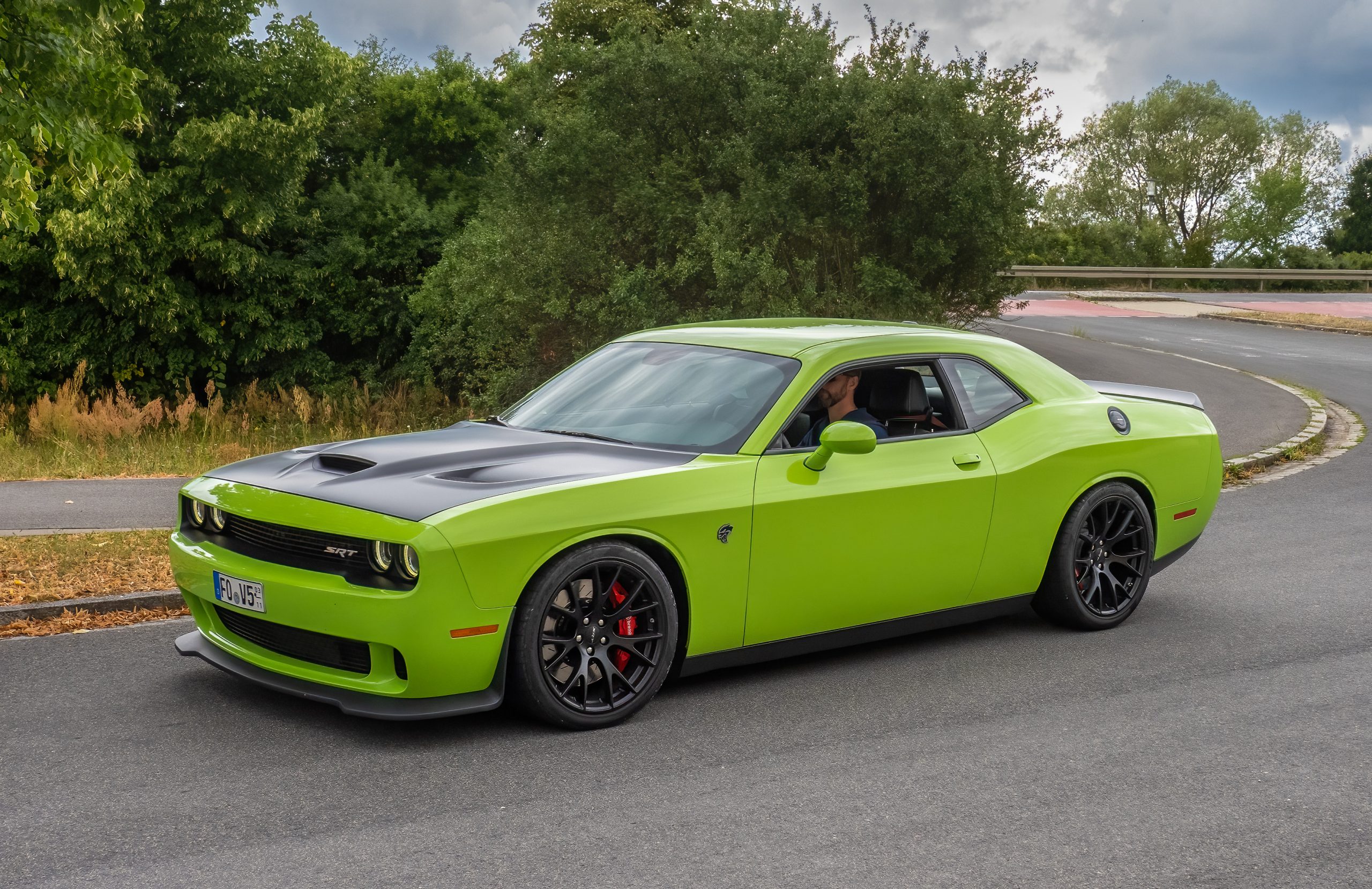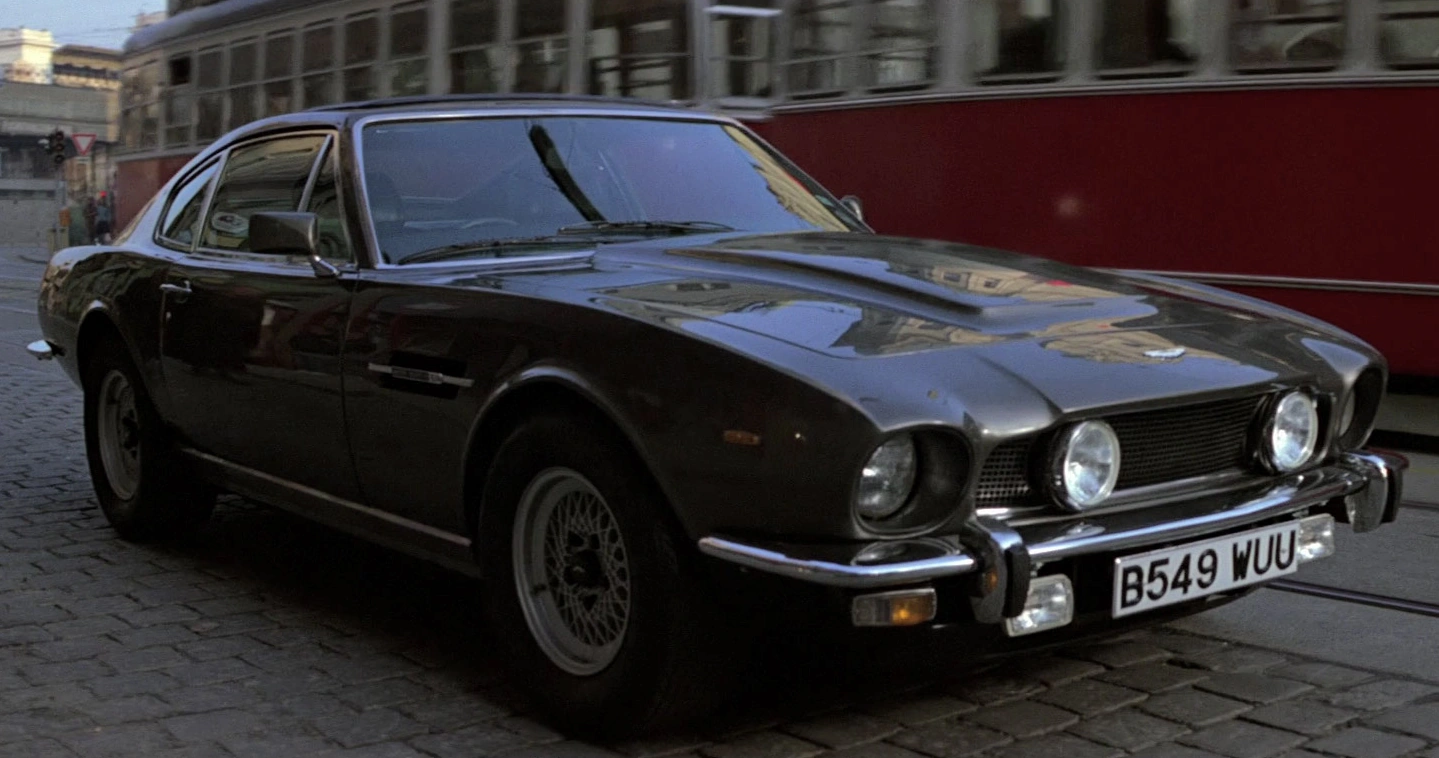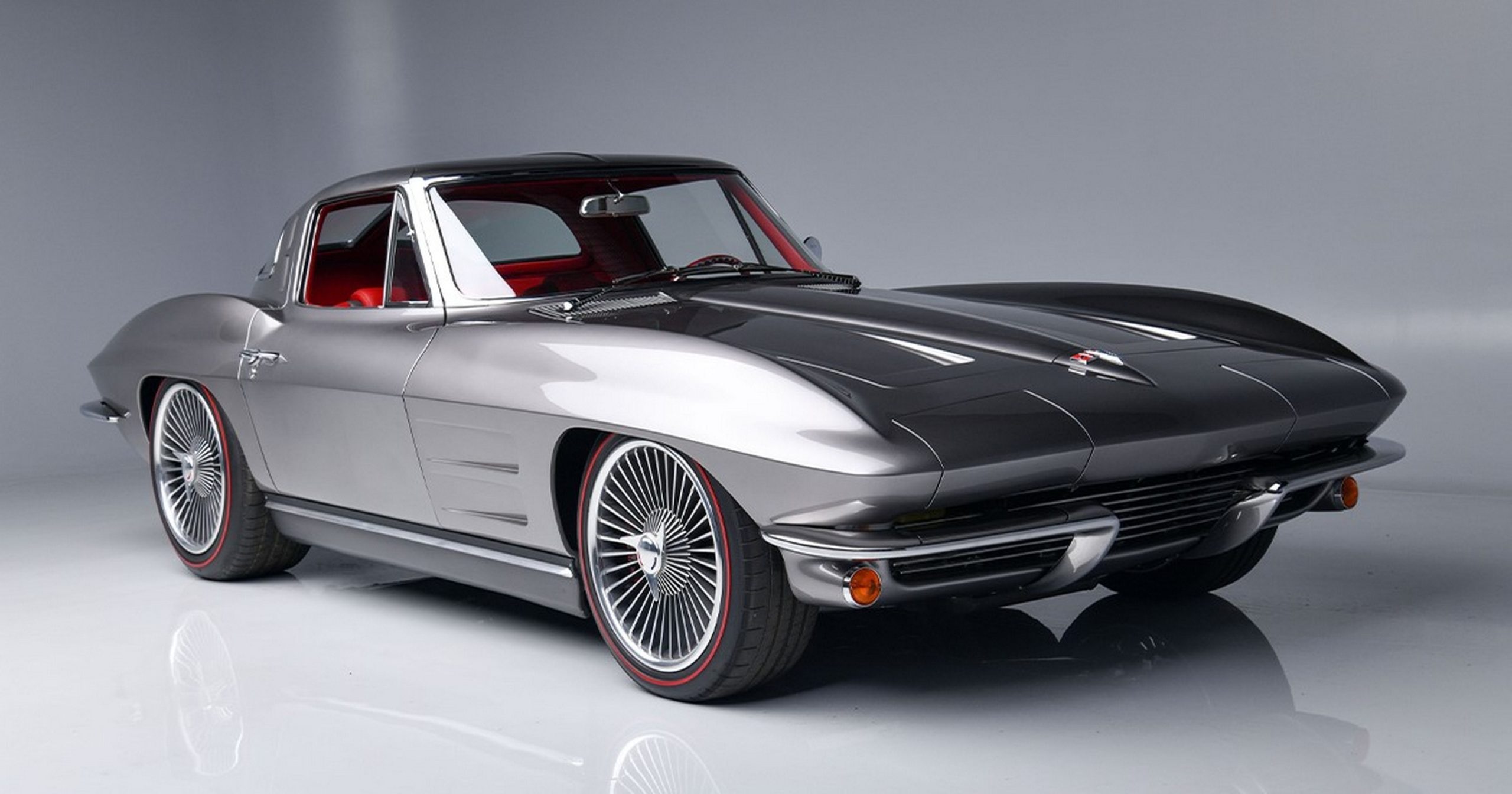When it comes to automotive legends, few icons loom as large as the American V8. It’s more than just a configuration of cylinders; it’s a cultural cornerstone—a rumbling heartbeat that has powered everything from street rods and family wagons to some of the most legendary race cars in history.
But among all the V8s to emerge from Detroit’s golden age, one stood apart. It wasn’t the first V8, nor the most powerful on paper. But it was the one that fundamentally reshaped motorsports, not just in America, but across the globe.
That engine was the Chevrolet Small-Block V8, particularly the early 265 and 283 cubic inch variants that debuted in the mid-1950s. Compact, lightweight, and over-engineered for their size, these small blocks didn’t just win races—they defined a new era of racing.
To understand how the Chevy small-block V8 became the most influential racing engine in American history, you have to first understand the context. In the post-war era, racing was a chaotic blend of backyard ingenuity and high-risk experimentation.
European manufacturers dominated international motorsport, with their high-revving inline engines and precision engineering. American racers, on the other hand, often relied on massive, heavy flathead V8s or inline-sixes that were ill-suited for the road courses and speedways where modern racing was taking shape. What Chevrolet introduced in 1955 wasn’t just a better engine—it was a revolution in packaging, performance, and reliability.
The small-block V8 brought something new to the table: power-to-weight efficiency, modular design, and accessibility that meant anyone with a wrench and a dream could build a competitive machine. It was an engine that could be modified endlessly, rebuilt easily, and run at the limit without falling apart.
In NASCAR, it quickly made its mark. In drag racing, it became the staple. In road racing, it surprised skeptics who thought American iron couldn’t handle the curves. In endurance events, it outlasted more exotic engines time and time again. The Chevrolet V8 didn’t just win races—it opened racing to the everyman, and in doing so, forever changed the soul of motorsport.
Also Read: 10 Best First Cars for New Drivers and 5 to Avoid

The Birth of a Giant: How the Chevy Small-Block Redefined Performance
The year was 1955, and Chevrolet had a problem. While their cars were affordable and popular with the post-war American public, they lacked the excitement and performance that younger drivers and racers craved. Enter Ed Cole and his engineering team, who designed what would become one of the most celebrated engines in automotive history: the 265-cubic-inch small-block V8.
This engine was a masterstroke of engineering—lightweight, compact, and surprisingly powerful for its size. Weighing in at just over 500 pounds, it was significantly lighter than the competition’s powerplants, which made it ideal not just for street performance, but for racing as well.
The small-block was also designed with modularity and scalability in mind. Its architecture allowed for easy upgrades—larger displacements, higher compression ratios, and more aggressive camshaft profiles—without having to redesign the entire block.
This feature made it incredibly attractive to racers and hot rodders who wanted to experiment and push performance boundaries. In the early days of stock car racing, many garages across the country began swapping their older, heavier flathead V8s with the new Chevy engine, finding immediate gains in speed, handling, and durability.
The engine’s early victories in oval-track racing signaled a changing of the guard. Soon, the small-block was dominating NASCAR short tracks, outrunning the big-block beasts that had long been considered unbeatable.
In the hands of teams like Holman-Moody and Smokey Yunick, the small-block Chevy became more than just an engine—it became a symbol of grassroots power, the idea that you didn’t need factory-backed luxury to win. You just needed a good engine, a fast car, and the will to outdrive your opponents.

Dominating the Drag Strip and Circle Tracks
While the small-block’s success on the NASCAR tracks was groundbreaking, its true domination came in drag racing. The Chevy V8 became the heart and soul of drag strips across the U.S., where power-to-weight ratios and quick acceleration were the key to victory.
Chevy’s small-block V8 was the perfect engine for this brutal sport. Its reputation for reliability combined with incredible aftermarket support made it the obvious choice for drag racers looking to extract every last ounce of power.
Unlike other, more complex engines, the small-block V8 was designed to be easily modified—upgrading the camshaft, bolting on a supercharger, or swapping out the intake manifold for better airflow was all part of the small-block’s allure. It was an engine that was easy to build and easy to tune, making it a drag racing mainstay.
But the small-block didn’t just stay within the confines of drag racing or oval-track events. It was also seen on road racing circuits. For example, the Chevrolet Corvette’s shift into racing in the 1960s was powered by the small-block V8, and it quickly became a force in endurance races like the 24 Hours of Le Mans.
Chevy had created an engine that could handle both the rough-and-tumble world of stock car racing as well as the high-performance demands of international road racing.
The engine’s compact design, combined with Chevy’s ability to tune it for reliability, made the V8 one of the most successful powertrains in motorsport history.
The small-block Chevy also became the foundation for some of the most successful race teams in history, helping teams like Hendrick Motorsports build race-winning cars that could go toe-to-toe with the best in the world. Whether on the drag strip, circle tracks, or winding road courses, the Chevrolet small-block V8 became synonymous with victory.

The Legacy: From NASCAR to Formula 1 and Beyond
As the small-block V8’s success became more widespread, its influence transcended the boundaries of American racing and found its way into international competitions, including Formula 1.
While F1’s naturally aspirated engines have always been in a different class, the philosophy behind the small-block—reliable power, high-torque output, and ease of modification—started to inspire engineering teams globally. The design principles found in the small-block Chevy were echoed in many motorsport engines that followed, from stock car engines all the way to IndyCar powerplants.
Even when the small-block V8 was eventually outclassed in certain segments, particularly in the 1980s when technology began advancing at a faster rate, the engine’s legendary reliability and ability to sustain high performance under duress cemented its place as one of the cornerstones of American motorsports.
The power of the Chevrolet V8 was not just in its performance—it was also in its endurance. While more exotic materials and technologies have entered racing, the lessons learned from the small-block continue to influence engine development to this day.
In NASCAR, where it remained a dominant force for decades, the small-block became more than just an engine—it became the standard of excellence, the measure by which all other engines were compared. Its success at Le Mans, drag strips, and road courses set a benchmark that has lasted far beyond the days when it was first conceived.

The Unstoppable Force of American Engineering
What made the Chevrolet small-block V8 so revolutionary wasn’t just the fact that it was a powerful engine—it was that it was an engine built for everyone. It democratized racing, giving privateers, enthusiasts, and garage mechanics the tools they needed to win on the world stage.
The engine was available in a range of configurations, easily modifiable to suit specific racing disciplines, and simple enough to be rebuilt with basic tools. Its success didn’t just change NASCAR or drag racing; it changed motorsport as a whole.
It opened the door to grassroots racing and allowed countless individuals to live their motorsport dreams without requiring vast resources or factory backing. It wasn’t just a symbol of performance; it was a symbol of possibility.
The small-block V8’s adaptability is what made it so important in racing. From early stock car races to the unforgiving drag strips of the 1960s and the winding circuits of Le Mans, the engine could be tuned and re-tuned to meet the challenges of any race.
It provided drivers and teams with the confidence to push their cars to the limit, knowing the engine would hold up through the intense strain of racing. The small-block was designed with durability in mind, allowing teams to rebuild and race it over and over again with minimal wear and tear.
Its simplicity was a double-edged sword in the best way—easy to understand, easy to modify, and easy to fix, it opened up the world of motorsports to an entire generation of drivers who might have never considered racing before.

Its influence can still be seen in the motorsport world today. Modern racing engines may be more complex, using sophisticated materials and advanced technologies like turbocharging, hybrid systems, and variable valve timing, but the core lessons learned from the small-block persist.
For instance, the importance of a well-balanced power-to-weight ratio and the ability to fine-tune engines for specific conditions remains a hallmark of high-performance engines.
Even as the automotive industry shifts towards more environmentally friendly technologies, with electric vehicles and hybrid engines becoming more common, there’s still a deep respect for the legacy of the Chevrolet V8 and its pivotal role in motorsport’s history. It was the benchmark for American engineering and a touchstone that other manufacturers aspired to replicate.
Also Read: 10 Best High-Mileage Cars You Can Still Buy New
In NASCAR, where it remained a dominant force for decades, the small-block became more than just an engine—it became the standard of excellence, the measure by which all other engines were compared. Its success at Le Mans, drag strips, and road courses set a benchmark that has lasted far beyond the days when it was first conceived.
Even though racing has evolved and new technology has taken over, the foundation laid by the small-block V8 is still evident in modern racing engines that continue to push the envelope in terms of performance, efficiency, and resilience.
The Chevrolet small-block V8 wasn’t just a milestone in American automotive history; it was a global phenomenon. Its contribution to the racing world cannot be overstated. For over six decades, this engine has powered more victories, more records, and more innovations than almost any other powerplant in history.
The small-block’s story is one of innovation, perseverance, and passion, and its influence reaches far beyond the world of motorsports. It has shaped the way we think about engineering, performance, and the relentless pursuit of excellence.
As we move into an era of hybridization, electric powertrains, and ever-more advanced technology, the small-block V8’s legacy will continue to rumble on. Even as the engine itself fades from mainstream racing, its impact on the spirit of competition and the culture of motorsport remains timeless.
The small-block V8 was more than an engine; it was a revolution, and its reverberations are still felt in the racetracks, garages, and hearts of enthusiasts around the world.

